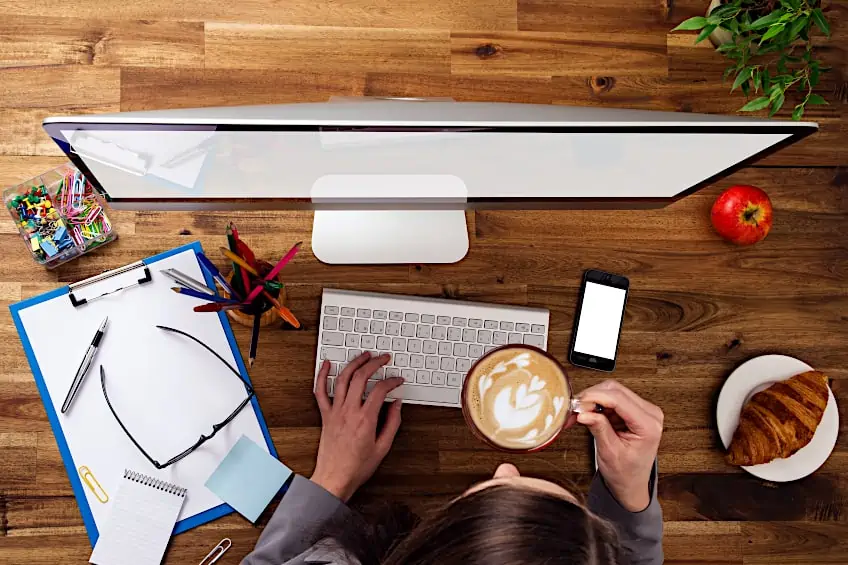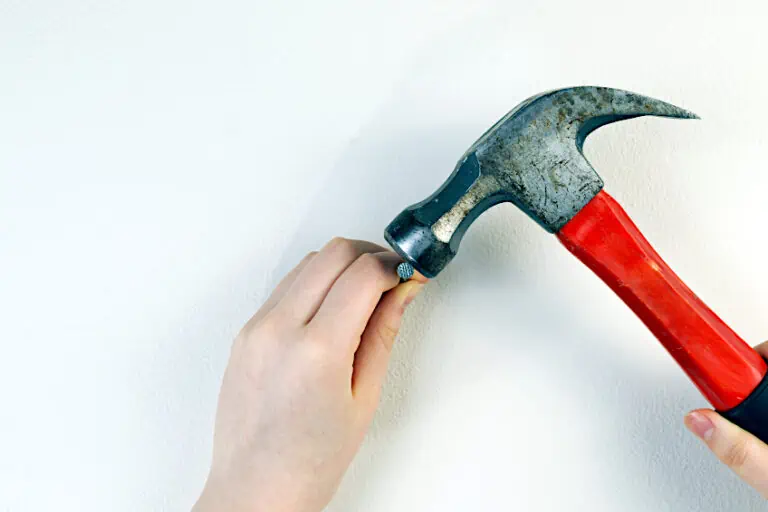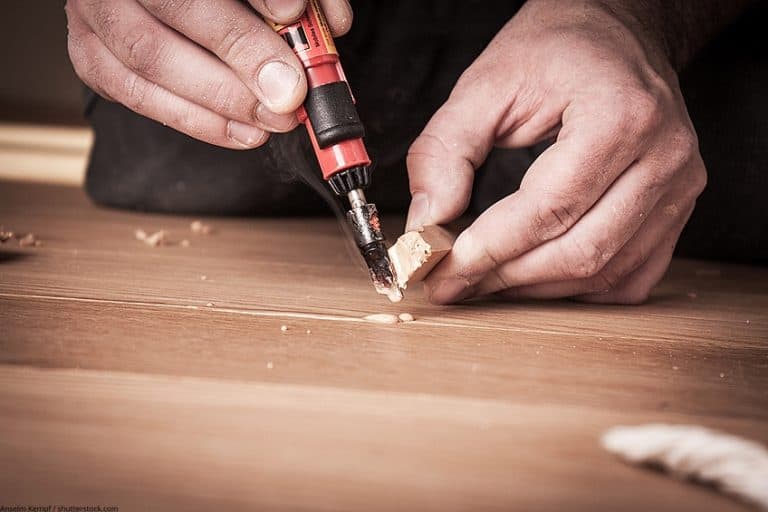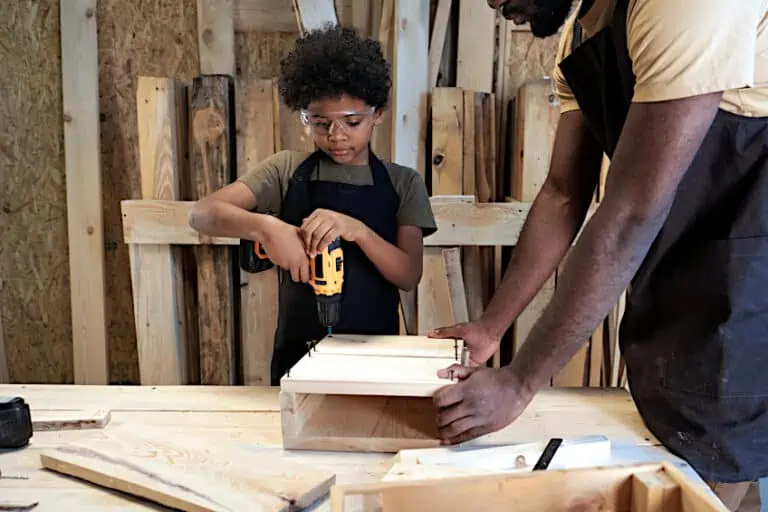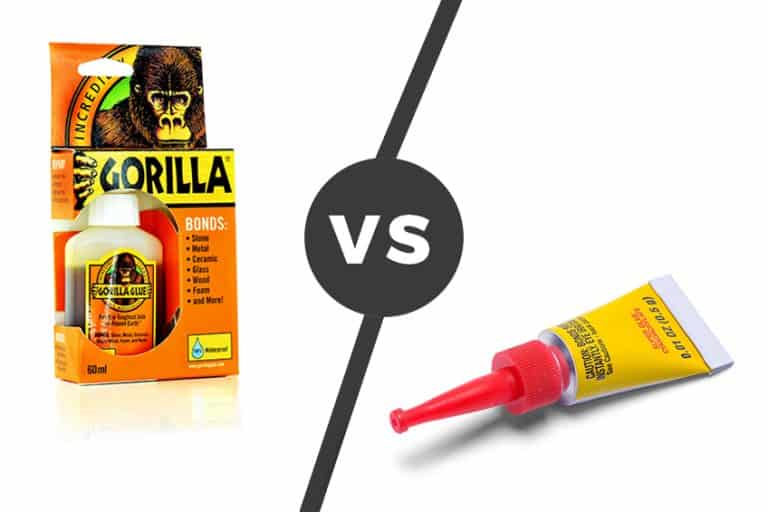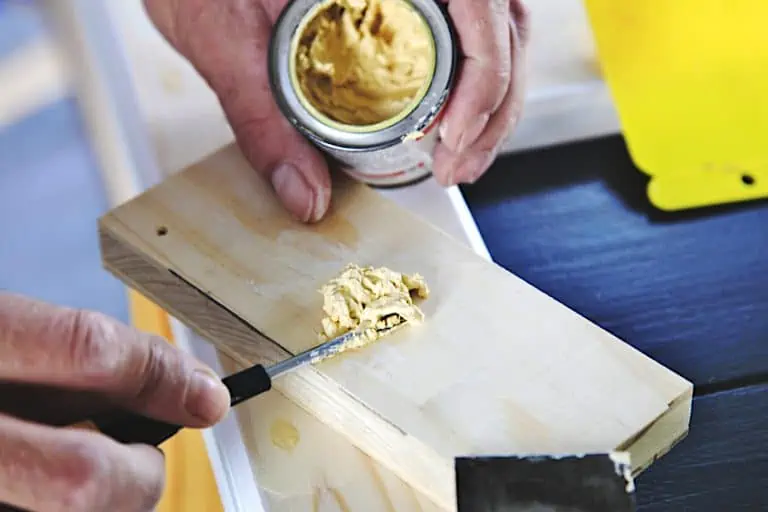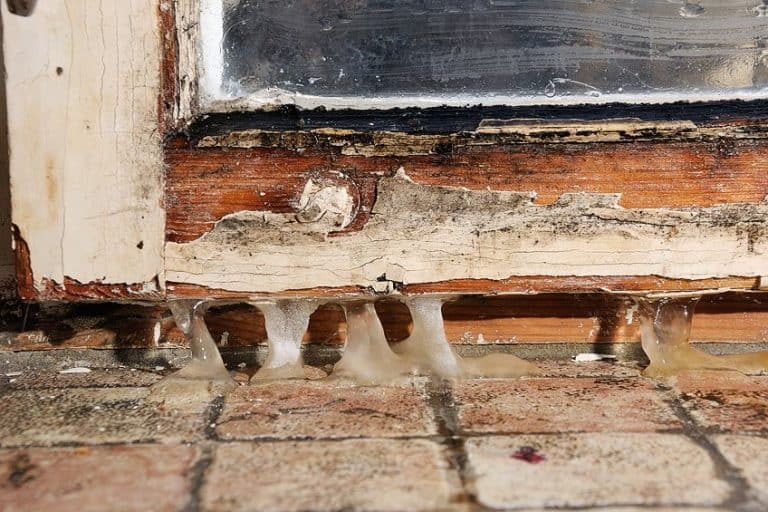Best Wood for Desktop – Ideal Woods to Use for Desks
Back in the day, having wooden furnishings was a sign of poverty compared to those who could have all of their big, fancy furnishings made of masonry. Times have changed though, and these days, having solid wood furniture is sort of a status symbol, but beyond this, there are more reasons as to why you’d want some wood furniture. There’s something about the look and feel of wood that not only makes you feel invited and cozy, but it provides an air of elegance that just can’t be matched by any other material. This being said, wooden desks have become something of a trend in recent years, which comes as no surprise considering that they can make anyone feel like the CEO of a Fortune 500 company even if you’re just surfing the web in your home office. So, let’s have a look at the best wood for desktop applications, why they’re used, how much they’ll put you out of pocket, and how they shape up against one another.
Table of Contents
What Types of Wood Can You Use for a Desktop?
While there are various desks on the market made of various types of wood, there are only a few that you can use that will give you the quality and longevity you’re looking for from a desktop. These woods provide a sturdy surface, the ability to withstand forces like impact, abrasion, spills, and minor scratches, and require relatively low maintenance, plus they look pretty cool too! This being said, let’s have a look at some of the best wood for desktop surfaces.

Maple Wood Desktop
Maple is one of the most popular wood types to ever exist. This is thanks to its unrivaled versatility, ease of use, durability, and of course its attractive grain patterns and willingness to receive most wood finishes. When it comes to picking a desktop wood many professional crafters agree that maple is the best choice thanks to its availability and overall visual impact both from the perspective of one sitting at the desk, and when looked at it from afar.
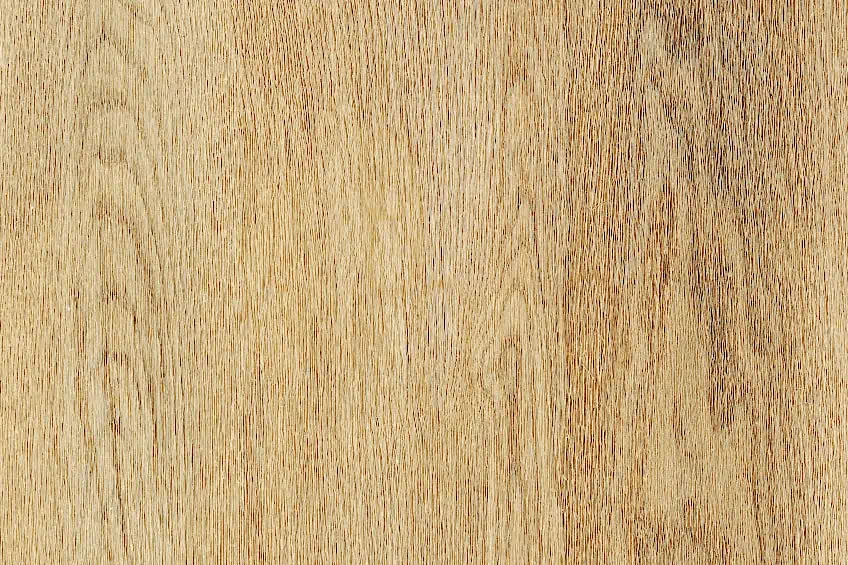
Maple is then, a great choice if you’re looking for a hardwood species to make a desk out of and it does have to be used to make only desks. If you’re the kind of person that enjoys uniformity when it comes to their furnishings, then consider using maple wood to make an entire furniture set! It’s not too heavy, so making your desk, chairs, and even side tables out of this wood is not only easy, but it looks good and is super convenient too.
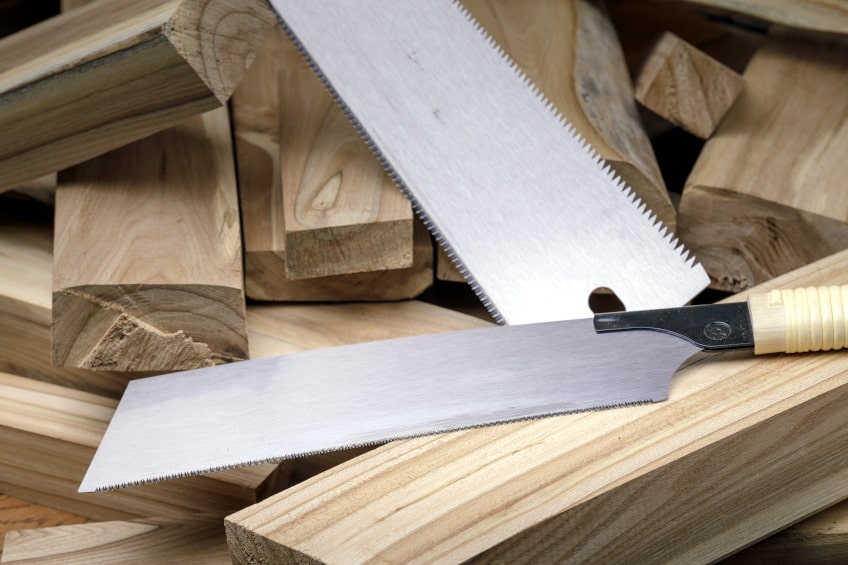
Maple wood is also one of the best desktop wood species because of how easily it can be stained. The internal grain of this wood species is dense, but it possesses just enough pours inside for it to easily accept things like wood stain and varnish quite well. Most crafters choose wood treatments like these as opposed to surface coatings like paint because they don’t hide the grain of the wood and considering how appealing the look of exposed maple grain is, it’s easy to see why.
Plywood Desktop
Not all of us can afford to select the finest walnut board and have it cut and delivered to our doorstep with only assembly required, or simply don’t want to go through the hassle. Besides, it’s a lot easier to work within your budget and/or with what you have. I is also the wood of choice for making bentwood furniture. This being said, there is absolutely no shame in using plywood to make your wooden desk, and we’re going to explain why.
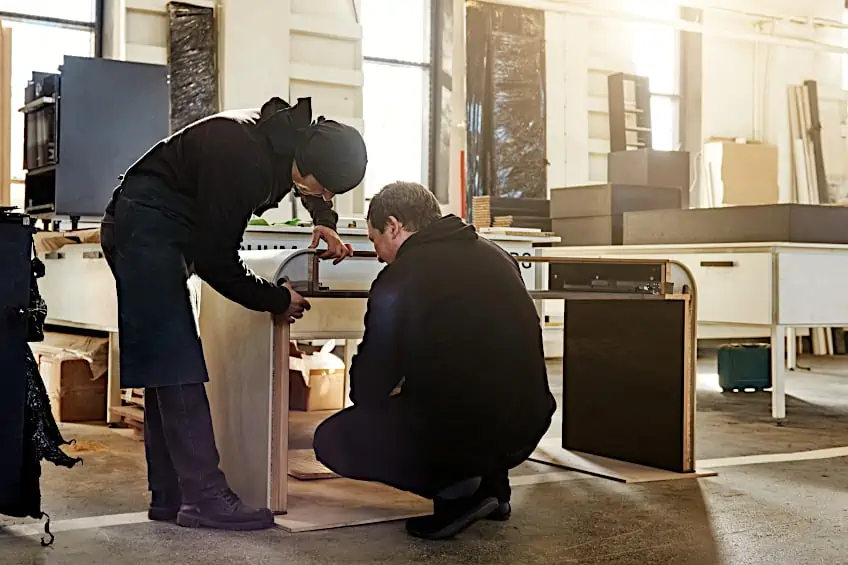
Since its inception, plywood has been a durable, affordable, and aesthetically pleasing alternative to hardwood and loads of other materials too. If you don’t know what plywood is, it is essentially a bunch of wood that has been cut up, had adhesive added to it, and then compressed under high heat to form boards. These boards can then have thin layers of wood known as veneer added to their surfaces to simulate the appearance of hardwood. If your style is industrial, or you want your office to look like your company is a super-cool tech start-up, you can use your plywood in its original state. Just seal it well to avoid splinters.
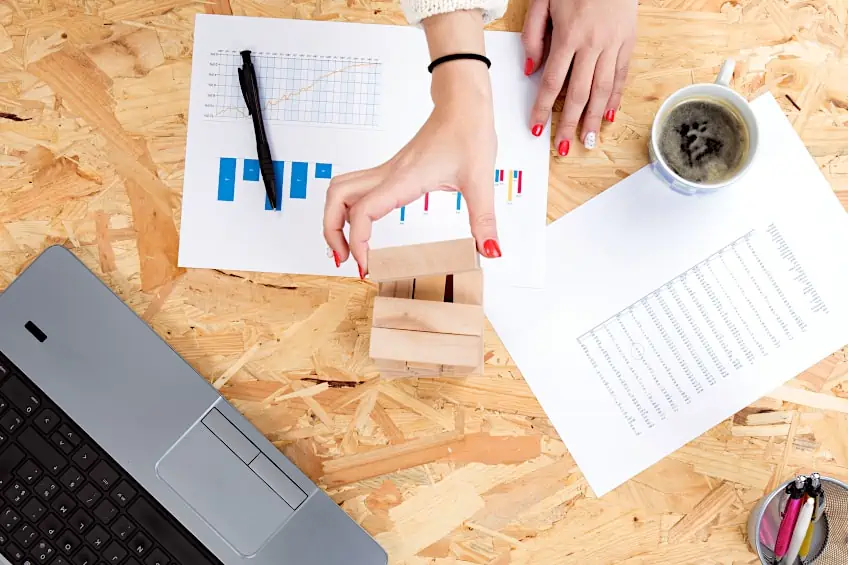
The cool part about using veneer instead of hardwood is that you get all of the visual impact of a hardwood surface without any of the drawbacks. What are these drawbacks? Well, hardwood is pretty time-consuming to maintain, can be incredibly heavy if used to make a large desk, and you’re limited with the aesthetic range of the board. Plywood allows you to pick the size, shape, and finish of your desk at a fraction of the price!
Cherry Wood Desktop
We don’t think that there is a wood that is so simultaneously loved and loathed as cherry. We don’t think that there is a wood that is so simultaneously loved and loathed as cherry wood. Why? Well, cherry, like most commonly used hardwoods, is exceedingly beautiful in appearance, with the only drawback being that it can be a real paint to finish. Cherry wood is known to have really dense wood fibers, which means staining, varnishing, and even painting it can take numerous attempts and hours of preparation.
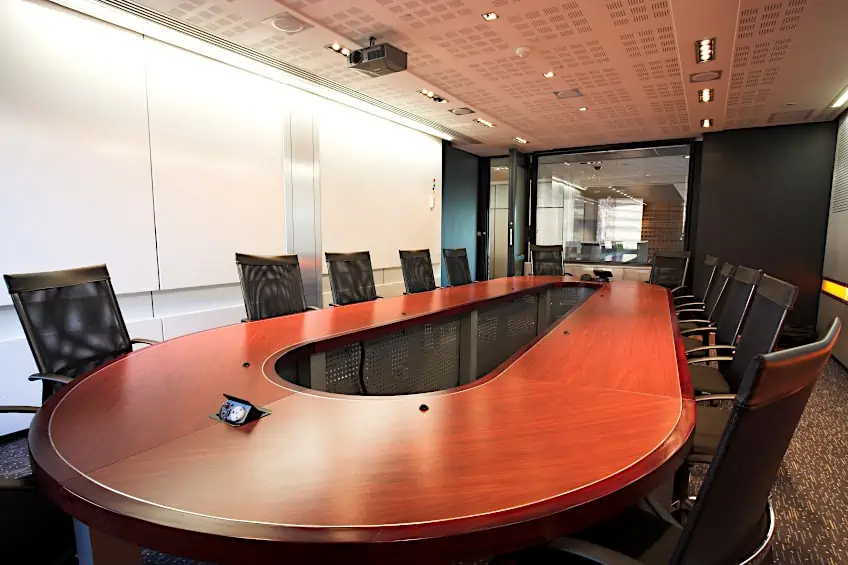
Is it a good wood for desk construction then? Yes! Cherry wood is heavy, hard, durable, and it looks great! Cherry wood has some of the most unique grain patterns of all of the hardwood species, which means that every desk you make out of it will be entirely unique. Its dark and light redwood is a real eye-catcher but considering how tough it can be to work with, it’s often passed over for more compliant wood species.
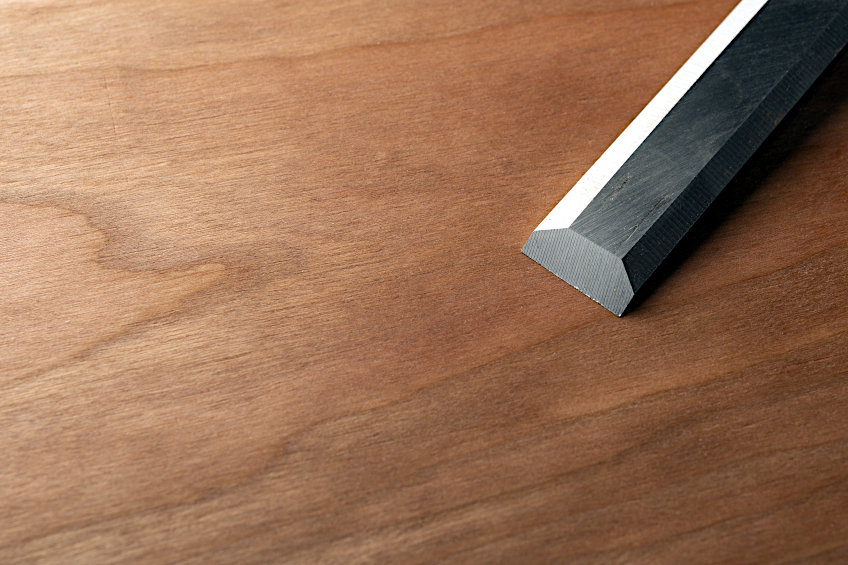
This being said, using cherry wood for desk construction is one of those things in life that requires immense effort and commitment on your part because, in the end, it is extremely rewarding. A cherry wood desk will last you a lifetime, is low maintenance, does not get affected by moisture easily (even if it’s not sealed), and if take the time and effort to treat it, will produce a simply stunning desktop.
Walnut Wood Desktop
You’ve probably seen a movie or two with an interior shot of a big fancy library or home study. They usually have a desk that looks heavy, and dark and seems to have a visual weight to its presence. These desks are usually paired with a fancy leather chair featuring a long backrest for the occupant to slowly spin around in and divulge their evil plans. These desks are almost always walnut, or veneer made to look like walnut hardwood depending on the film’s budget.
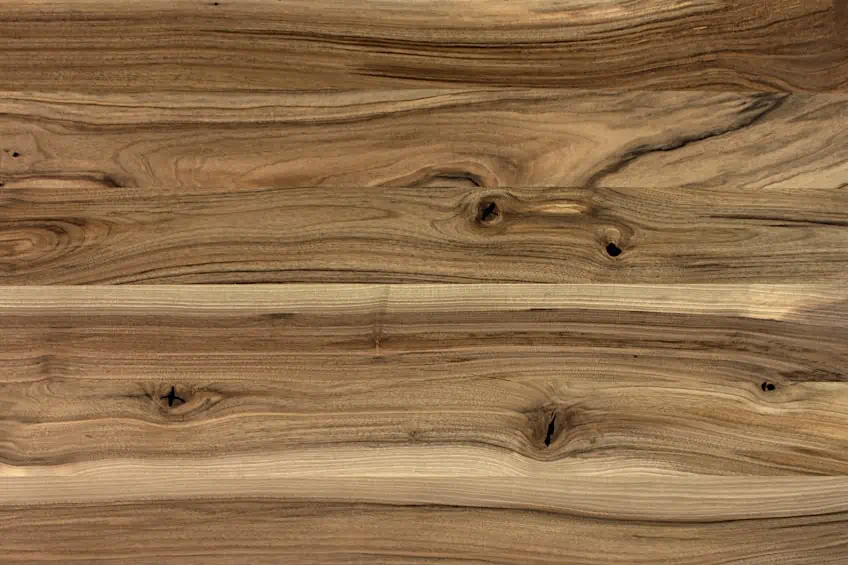
Depending on who you ask, walnut is arguably the best wood for desk construction. Although, if the aforementioned imaginary scene didn’t give it away, this wood can be pretty expensive. How expensive, you ask? Well, considering that companies like Rolls Royce use this wood for the interior trim of their cars, and one of their cheapest cars go for just under half a million dollars, you can do the math.
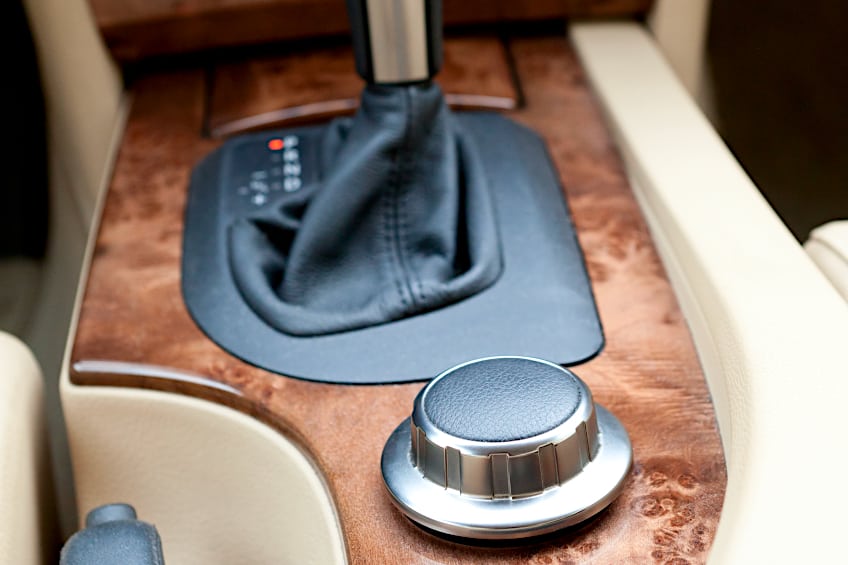
Walnut board is characterized by its dark heartwood and slightly lighter sapwood, both of which can be used to make extremely long and heavy desktops. This wood is extremely durable, easy to work with and is resistant to the effects of moisture, rot, insect infestation, impact, abrasion, and even extreme heat (without any wood treatment). If you are by the means, you could have an entire desk (legs included) carved from a single walnut block!
Oak Wood Desktop
Oak wood is decidedly the best wood for desk construction and pretty much anything else you want to do that involves wood board. Why? Oak wood has been around for thousands of years, and if it was good enough to serve humanity through two world wars and several civil wars, you can bet your bottom dollar it’s good enough for a desk in your home or office.
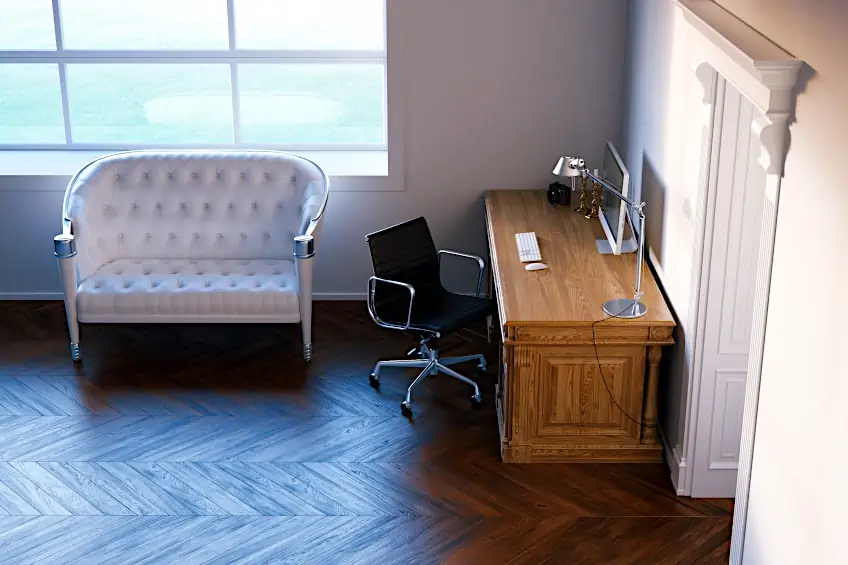
What makes oak wood the king of construction? Well, it’s extremely durable, dense, good-looking, easy to work with, easy to maintain, easy to clean, and will last you several lifetimes if you look after it properly. White oak and red oak are some of the most popular choices when it comes to desktop wood, each of which offers its own unique grain patterns for you to leave exposed or paint over, depending on your taste.
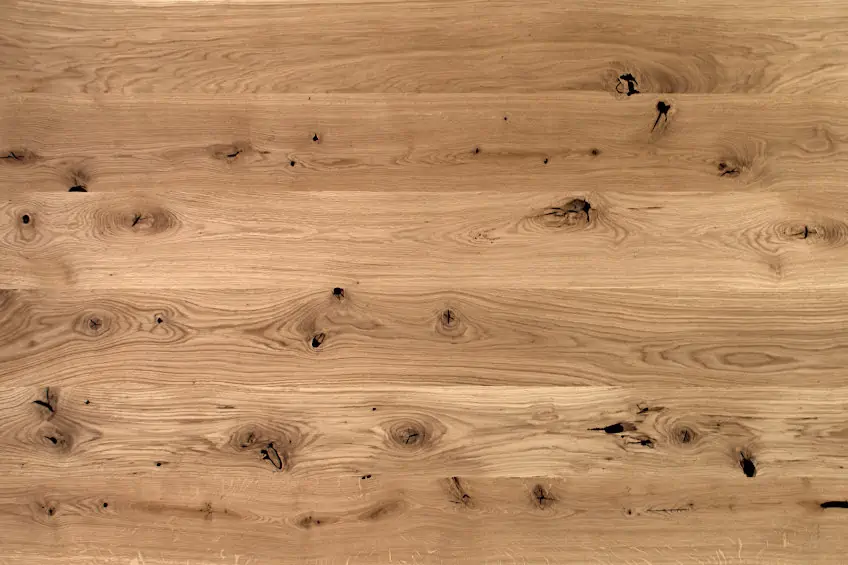
Oak works as a solid wood desktop because of its ability to hold incredible weight, you could sleep on it if you really had to, and it wouldn’t even buckle! Oak wood is also relatively affordable for a hardwood of its class, which makes it the go-to solid wood desktop board because you tend to get all of the benefits of a premium wood like walnut without having to break the bank, plus, it’s a lot easier to treat and customize!
Birch Wood Desktop
If you’re looking for a wood that isn’t too expensive, you should consider birch wood. This isn’t to say that the wood is entirely cheap (it is, after all, a premium hardwood) but it is a little bit more affordable than some of the wood species we’ve had a look at so far. It also makes for a pretty good desktop wood, and although it is the strongest wood around you definitely won’t be breaking it with your bare hands.
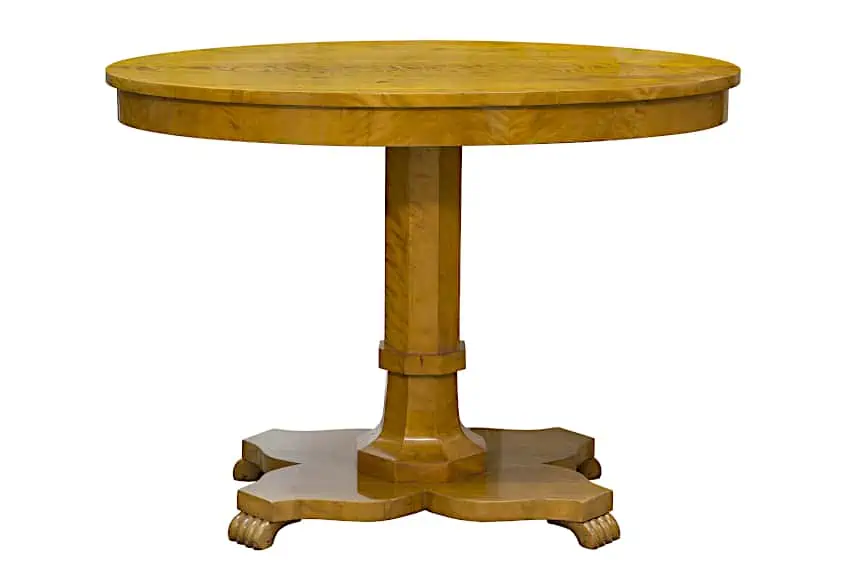
Birch is really dense too, which means it’s pretty heavy, so if you’re looking to make a long desk out of it you might want to get some help moving it around. This does mean that the desk will be pretty stable so you won’t have to worry about accidentally moving it around when you knock into it, although it might leave a little bruise considering how strong this wood is.
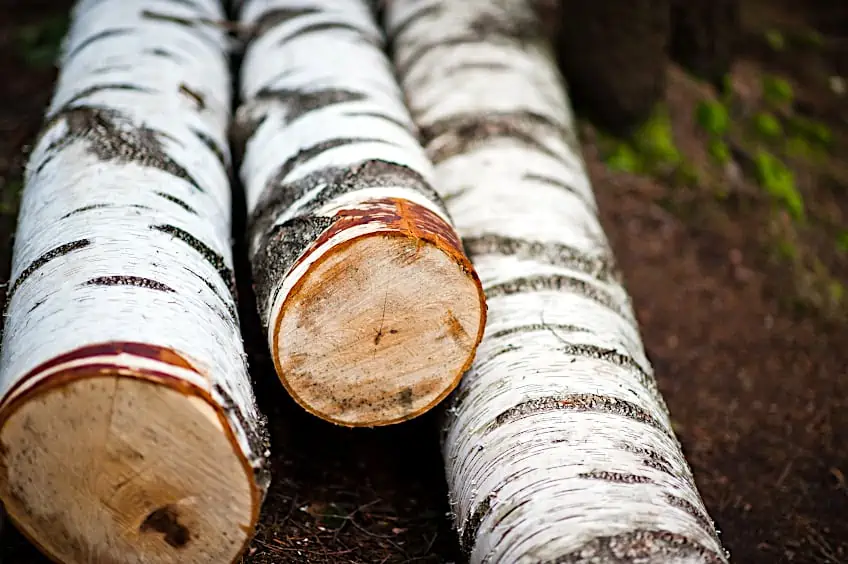
Birchwood is also one of the most durable wood species around; it has more or less the same color as walnut but it’s far heavier. Unlike walnut, it won’t break the bank, and loads of wood crafters actually prefer this wood species because of how well it takes to things like wood stain and varnish, with each board producing entirely unique hues and tints.
Pine Wood Desktop
If you’re looking for a desk that is super heavy duty, just something that you can read a book at, study, and even use a desktop PC on, then pine might be the right wood for you. Pine is a lightweight hardwood that is really easy to move around and is relatively inexpensive. It is also decently hard wearing and has a unique look to its grain that is unique among the hardwood species.
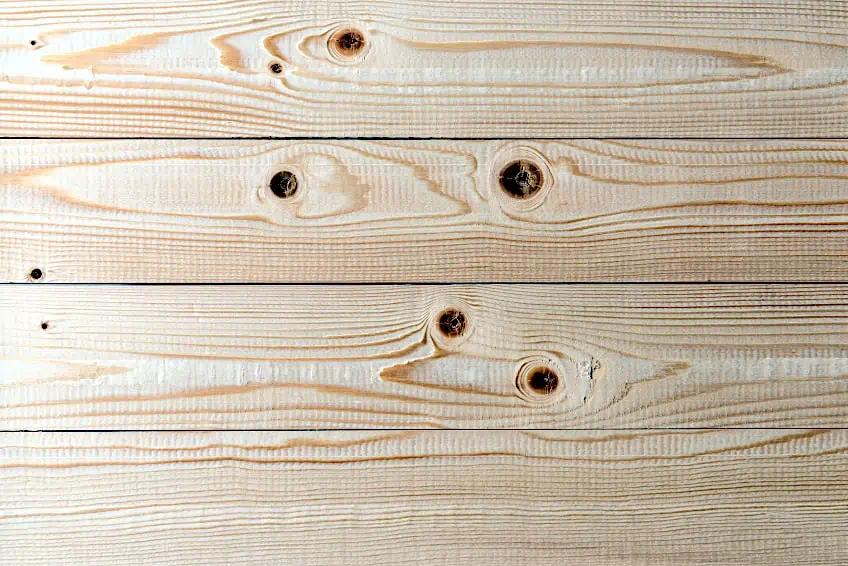
Pine wood is known for its light brown color and wood grain that looks light red to light brown in color. Pine is usually chosen as a compromise between the durability and weight of hardwood, and the availability and low price of plywood and/or other engineered woods. Pine wood is really abundant, and different species produce various color pallets, which makes it a good middle-of-the-road wood for desktops.
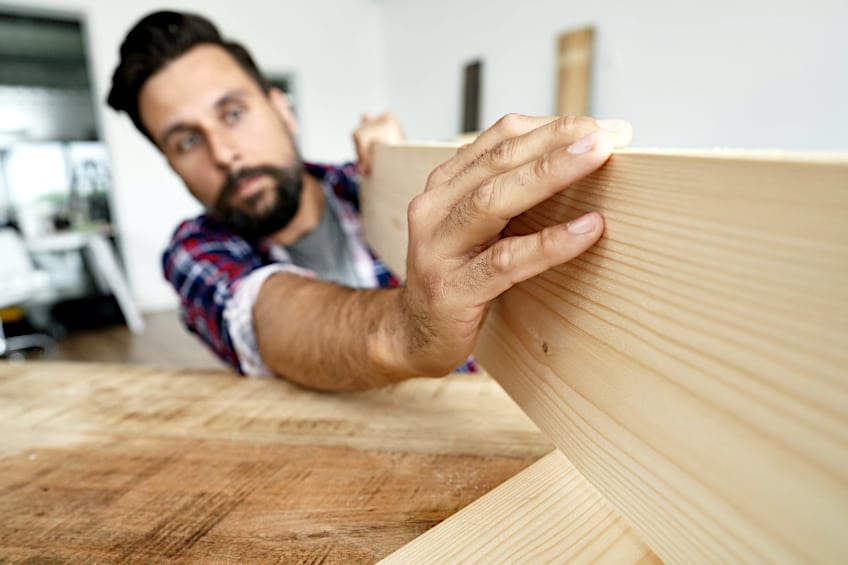
In the crafting industry, pinewood is known for its ability to be stained, varnished, painted, and even sealed. This wood has an interesting wood grain that happens to take really well to wood treatment, and therefore is chosen not for its exclusivity or weight, but because it is one of the most versatile wood species not only in the US but all over the world.
Cedar Wood Desktop
If you’re in the mood for something completely different from some of the wood species we’ve had a look at so far then you should consider cedar wood for your DIY wood desktop. Cedar is exceedingly easy to work with while still being durable enough to stand up to the punishment that a work desk should be able to take.
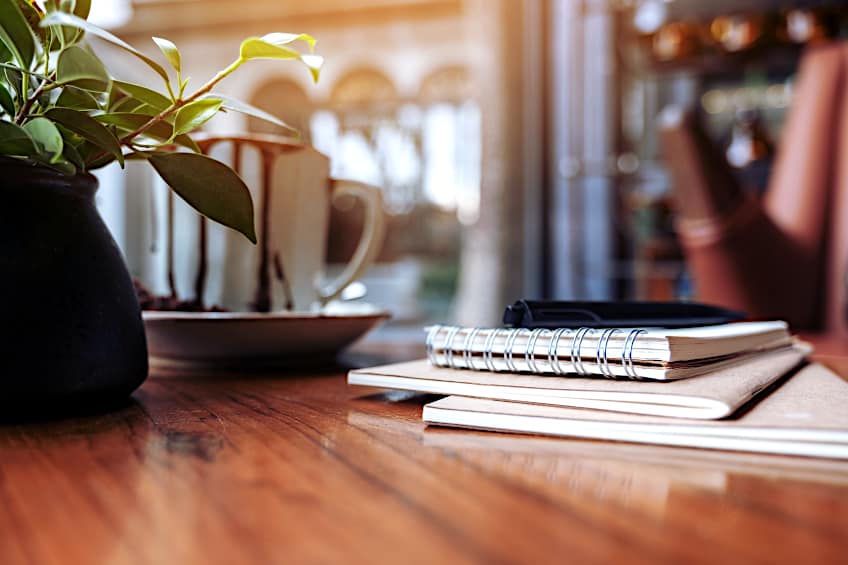
This being said, cedar is relatively lightweight, which means you won’t pull a muscle lugging your desktop around the home or office. In terms of looks, cedar has a unique color of light red, bordering on pink. This combined with its unique texture makes it a popular wood for one-off workpieces and considering that it is one of the most durable and decay-resistant wood species on the planet, it’s easy to see why most novice crafters tend to make their first workpieces from this wood species.
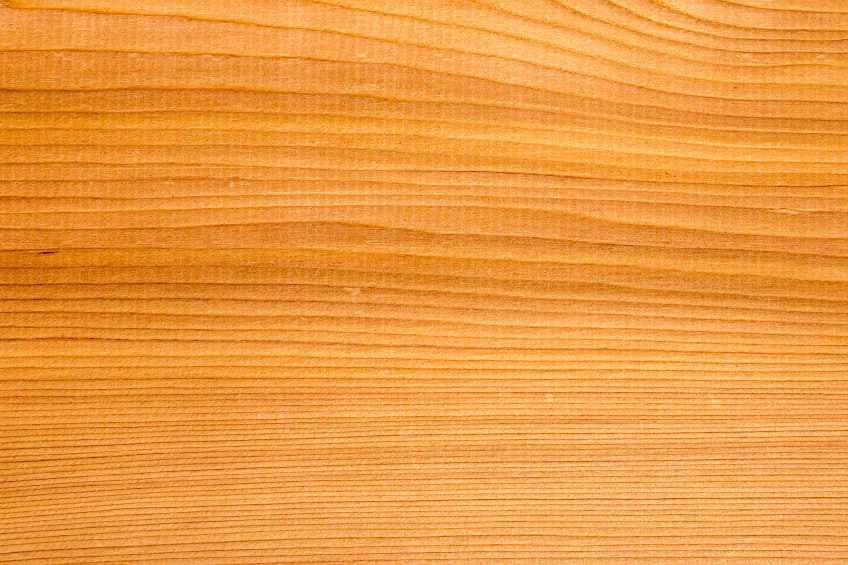
Normally, we like wood species that are easy to treat with varnish or wood stain, but cedar is a bit too porous for most applications. This being said, spilling coffee on an untreated cedar desktop can result in a permanent stain. After staining or varnishing, we highly recommend that you seal your cedar desktop adequately before putting it to use.
Rosewood Desktop
Are you in the market for a one-of-a-kind desk? Are walnut and oak wood too mainstream for you? Are you a connoisseur of only the finest wood species? Well, then rosewood might be just what you’re looking for. Considering it costs upward of $17,000 per ton, it definitely won’t be found on one of the isles at your local hardware, but if you can find a supplier willing to sell you some, it’s well worth the wait (and cost).
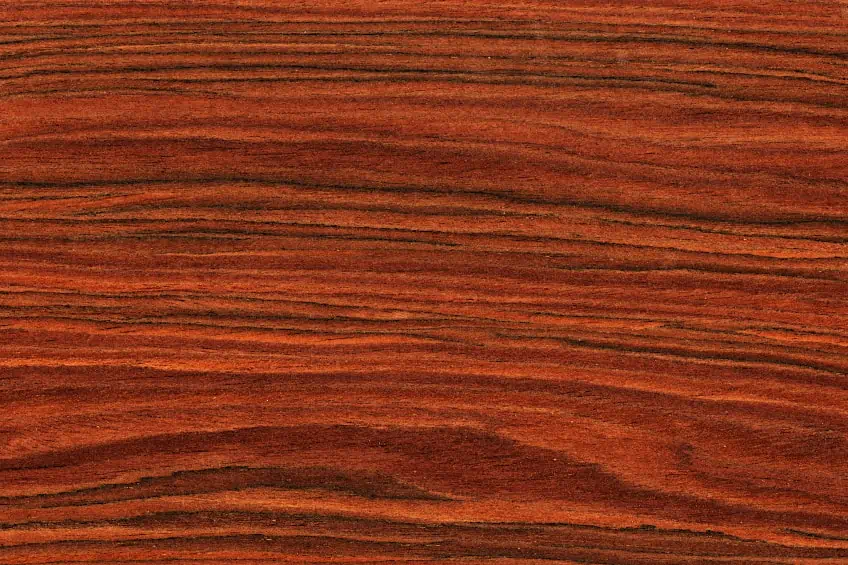
What makes rosewood so special? It’s pretty rare and is best characterized as having a very dark brown and light purple color to it. These colors are broken up by little black streaks that run across the grain of the wood making it extremely interesting to look at. Rosewood is also decently heavy, which means it not only makes a pretty desk but a really sturdy one at that.
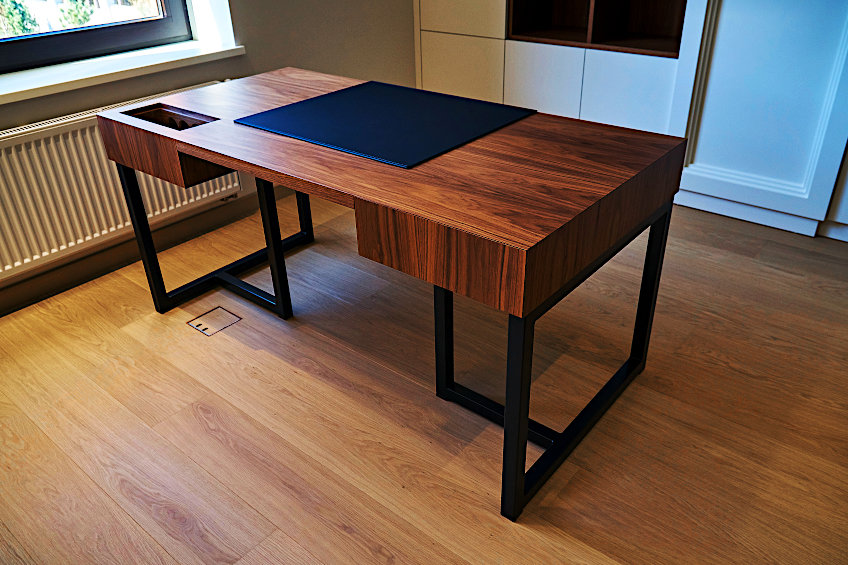
Although this is one of the hardest wood species around, it’s also really flexible like its relative teak wood, which means that if you ever find yourself stuck with more than you need for your desk (lucky you) it can be used for other wood crafts too. Rose wood is also great if you hate hardwood that creeks in the winter, as thanks to its flexibility it does really well in cold weather.
Elm Wood Desktop
Elm is a great wood for DIY desktop making. In fact, elm is a good wood for pretty much any DIY project under the sun. Any professional crafter with a certain level of experience knows it’s not the exclusivity of the wood that matters, but rather of much you can do with it. Versatility and durability are important and considering that elm has been used to make everything from hockey sticks to paper, it’s pretty apt in both those categories.
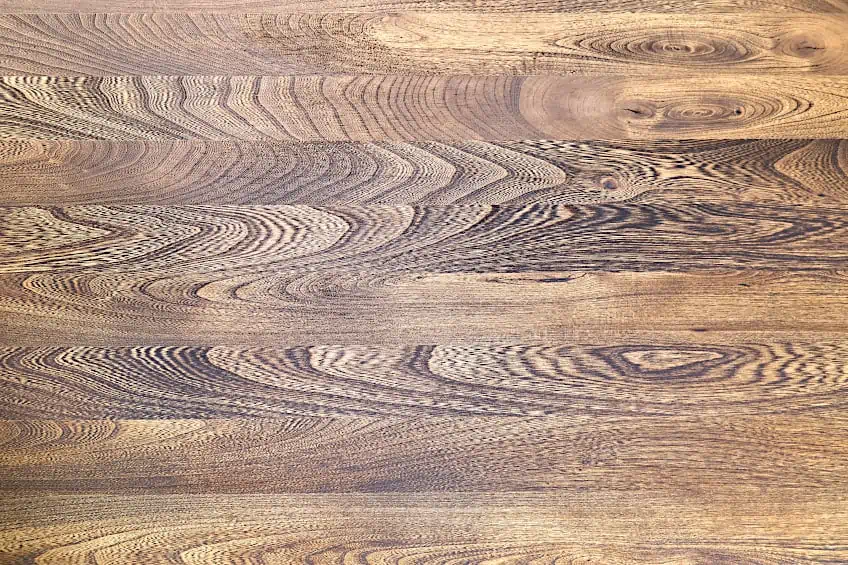
Elm wood is really strong, rigid, and has a unique look to it. If you’re in the market for a unique desktop but don’t want to spend too much on a wood like rose wood or walnut, then this should be right up your alley. Elm has a red to brown heartwood with a light white sapwood, but what really sets it apart is the prominence of its grown rings which integrate into furnishings quite nicely.
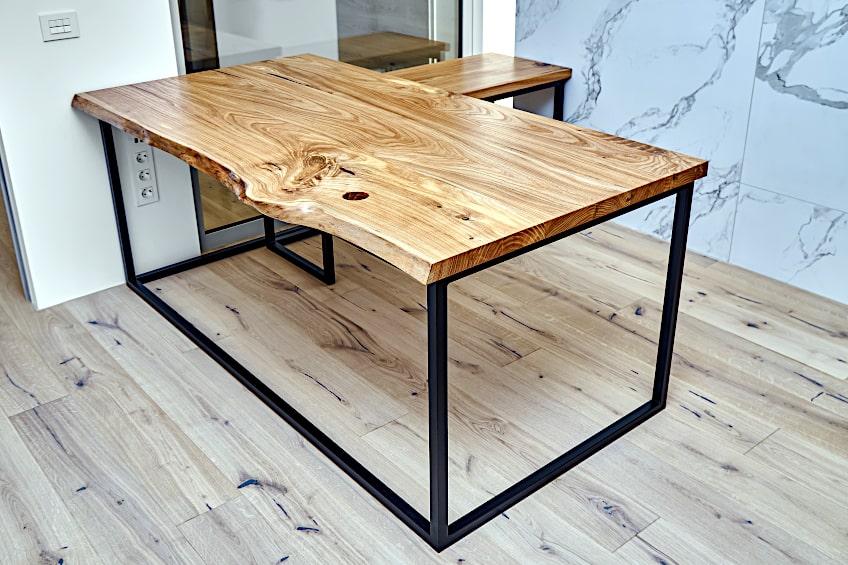
Elm is also the ideal wood for DIY wood desktop construction because it is highly durable. This means that you won’t have to worry about things like slight dents or your monitor accidentally falling over ruining your desktop. One of this wood’s party tricks is that it’s flexible too, so if you’re in the mood to build a curved desktop there’s absolutely nothing to stop you.
How Do These Woods Compare?
While all of these wood species have their inherent advantages and flaws, it really does depend on the type of desk you’re looking to make and of course what you need your desk to be able to withstand. For most people though, the price will be the deciding factor, so let’s have a look at how much each of the aforementioned wood species and see how much they should cost. Remember that prices may differ according to your state and/or region, so without further ado, let’s show how these desktop woods stack up against one another in price.
| Type of Wood | Characteristics | Average Cost (Per Square Foot of Board) |
| Maple |
| $8,99 |
| Plywood |
| $6,99 |
| Cherry |
| $6,99 |
| Walnut |
| $10,99 |
| Oak |
| $9,99 |
| Birch |
| $6,30 |
| Pine |
| Between $2,00 and $6,00 |
| Cedar |
| $7.00 |
| Rosewood |
| $12,00 |
| Elm |
| $6,00 |
As you can see, there are many factors to consider when choosing a wood for your desktop. Now, you might be tempted to go for the most cost-effective, but you might regret that a little way down the line so be sure that the wood you choose is up to conditions that the intended application of your desk will throw at it. At the end of the day saving a little bit of money at the checkout line could end up costing you more in a couple of months.
What Should You Consider When Choosing a Wood for Your Desktop?
Now that we have had a look at some of the characteristics and prices of the most common hardwoods used to make desks, it’s time that we had a look at a few factors you should take into consideration when choosing your next DIY wood desktop. Keep in mind that these are just a few basics that you should consider, your individual needs such as ergonomics, overall shape, location, load-bearing ability, and finish are largely subjective, so you’ll probably have a good idea about these factors going into it.
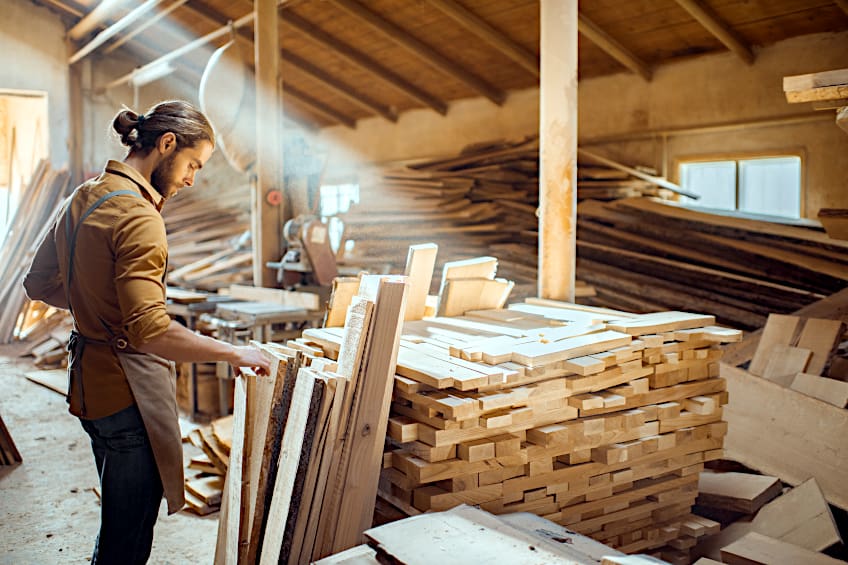
The Construction Quality
We’ve had a look at what the best wood to make a desktop is but that doesn’t mean that all desks made with a certain wood are automatically going to be objectively good desks, How a desk is put together matters as much as the material used to make it, so you should ensure that you (or whoever is putting your desk together), are doing a good job with the construction process.
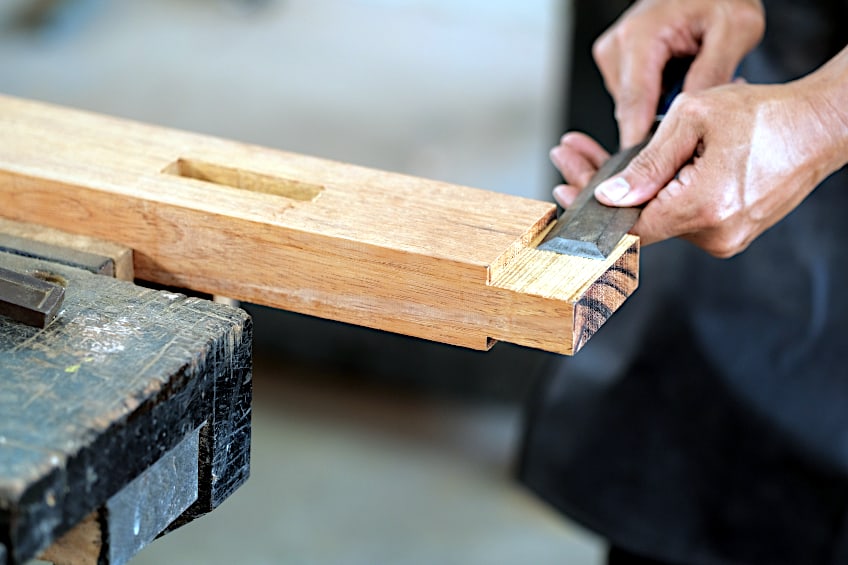
This being said, even using the best wood to make a desktop won’t mean much if your desk falls apart or easily sways from side to side when a weight is put on it. The legs and desktop of said desk should be as sturdy as possible, not allowing for too much give. Depending on the type of wood you have chosen to use for the legs and surface of the desk there could be a bit of compression if the wood species isn’t inherently rigid.
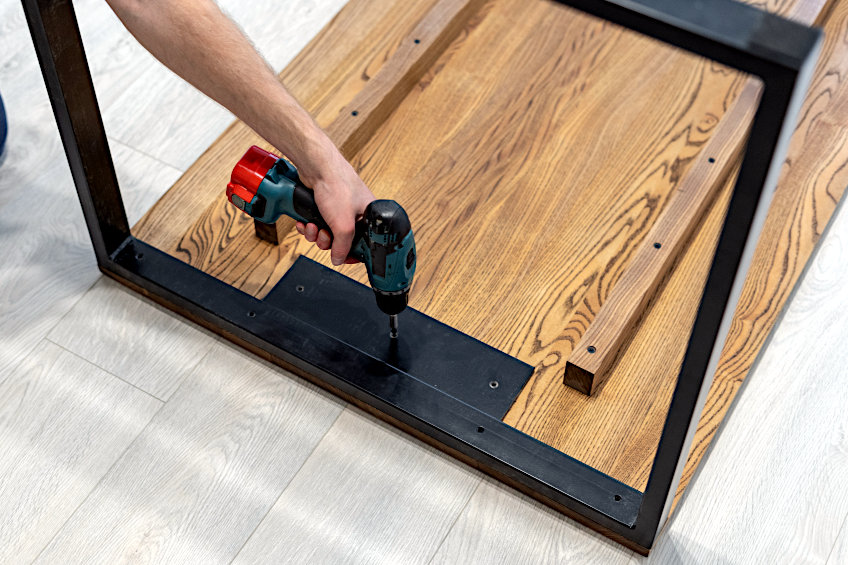
The Level of Comfort
If you’re taking the time to read this the chances are that you’re looking to make a desk that you’re going to be using consistently. This is why comfort should be a top priority right after structural stability when it comes to a desk. There are loads of factors to consider, such as height, shape, distance between you and the opposite end of the desk, and even how the drawers extend, should be considered.

Other things you should take into account is how the desk is going to find into the existing space, whether it be in the center of the room, in the corner, or near a window, it should never be uncomfortable, too small, or too big for your needs, which is likely why you’re making it from scratch to begin with. Lastly, ensure that you have enough room for your feet and knees!
The Color
One thing that you should keep in mind when choosing a wood for your desktop surface is that you won’t be changing any time soon (unless you are in which case lucky you!) so you best be sure to choose a color that not only suits your personal taste but the feel of the space you’re in too. A trade secret is to use your existing color pallet as a foundation for the color choice of your desk.
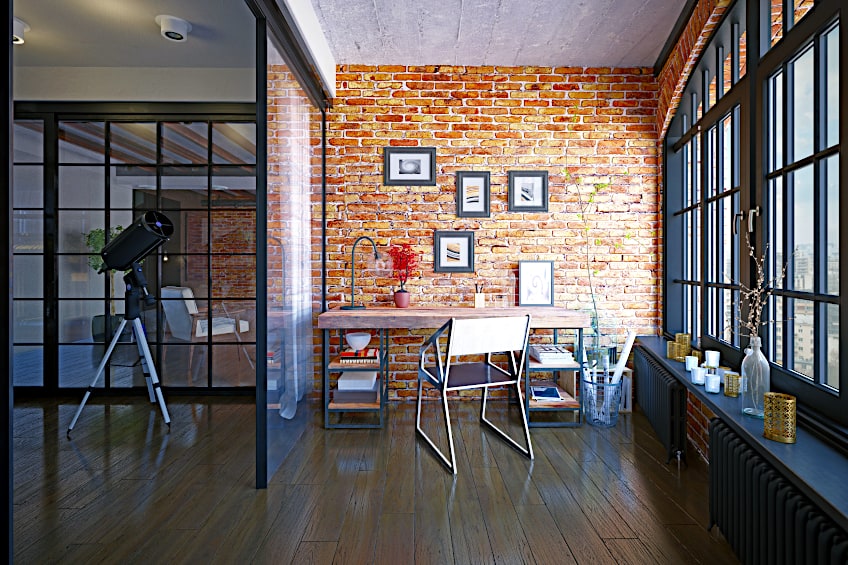
Alternatively, if you have a large open floor plan in the space where the desk will be situated you can go for light colors so that it blends into the space, or you could go for a slightly darker tone to create a sort of anchor for the space. Color is probably something at the front of everyone’s mind when choosing a desk, but it’s also easy to overlook when things like price, size, and existing aesthetics come into play.
The Cost
Cost plays a huge role in the decision-making process of most of us, and is really unavoidable unless you fell, process, cut, finish, and install your wooden desktop all on your own price should be given particular consideration. Especially if you’re choosing a wood for multiple desktops, in which case you’re likely better off choosing a cheaper wood that is durable and visually appealing, rather than a wood than an exclusive one that could break the bank.
This being said, for multiple desks you might consider a material like plywood because you can get quite a bit of it for relatively cheap and then choose the veneer closest to the hardwood you liked, However, if you’re more interested in the feel and weight of the desktop you could go with a wood like maple as it moderately priced and has a beautiful texture and a good weight to it.
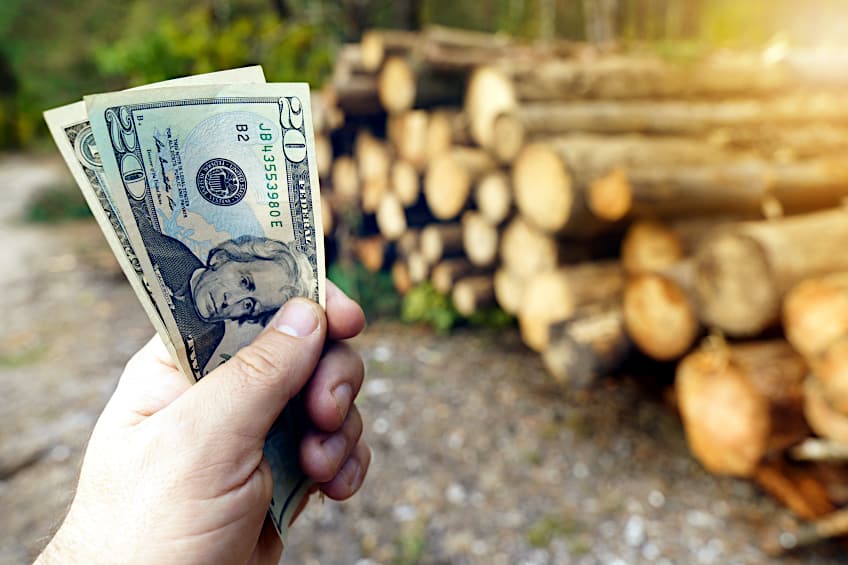
Wood Grain
The grain of the wood you choose can greatly affect the overall aesthetic of the desktop surface. Besides the look, grain affects the texture of the workpiece and the way that your desktop interacts with the space you’ve decided to place it in. Wood grain also affects many other characteristics of the desktop, which can affect your choice of wood going forward.
What exactly can the grain of a wooden desktop affect? Well, if a wood grain of a wood board is really tightly packed it means that the wood is quite heavy, but it also means that the board is sturdy and able to resist things like splitting, moisture, rot, and insect infestation. Wood grain can also affect how much dust your desk attracts, which depending on your environment could be a deal-breaker.
What Is the Best Wood for Desktop?
So, what is the best wood for desktop surfaces then? We have looked at many interesting characteristics, flaws, wood species, designs, costs, and even colors. There really isn’t a simple answer to this, and this is because even though natural hardwoods like oak, cherry, and pine are objectively the best choice for a desktop, there are other things to consider.
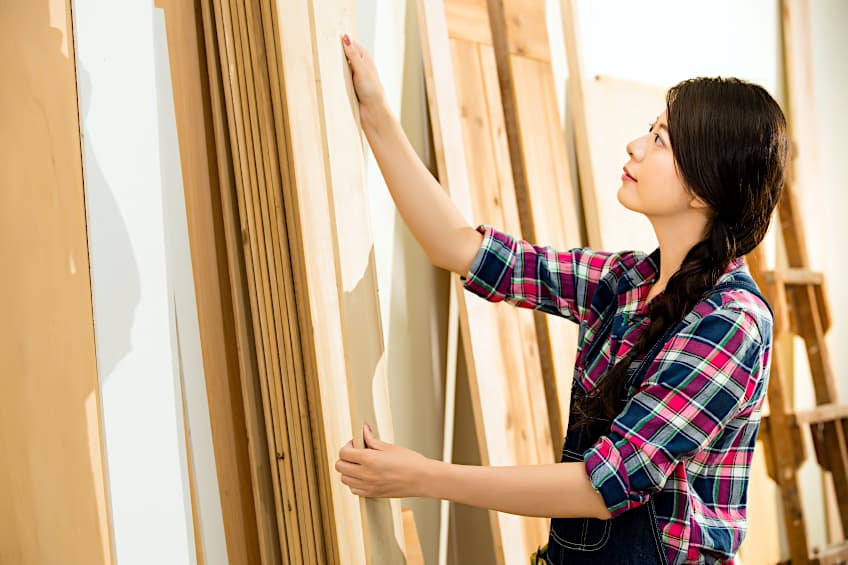
The main thing to consider is what you need from the desk. If you’re constructing a desk for your little ones to play on, spending an arm and a leg on solid walnut probably isn’t a good idea. The inverse is true too, if you’re designing a desk for your home office and there’s a chance that prospective clients or co-workers might see it, it’s probably a bad idea to spring for some unfinished plywood.
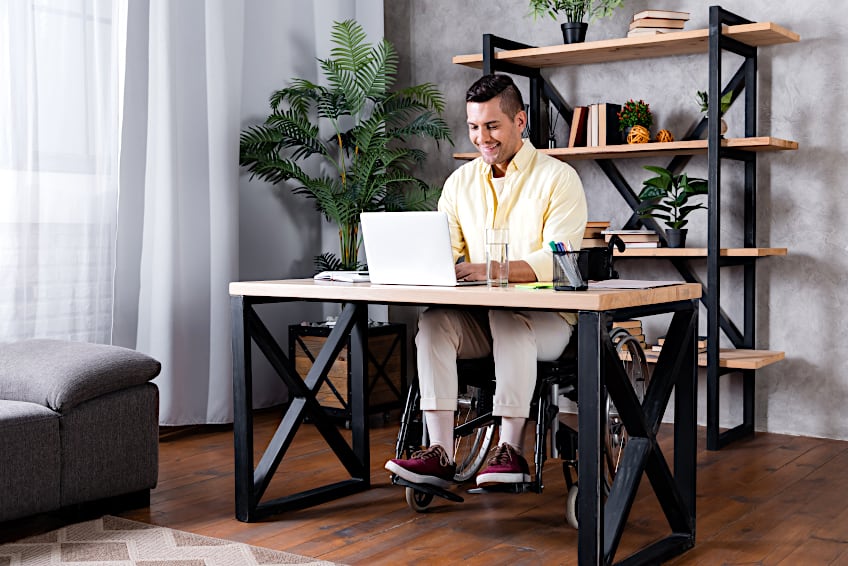
This being said, you should always choose a wooden desktop that suits your need, and your budget for that matter. Virtually all hardwood surfaces can be treated, altered, or wrapped so choosing a wood with the best physical characteristics like strength and porosity should be considered first as aesthetics can be altered many times over once you have the ideal material.
Now that you know what types of desktop woods are available for you to choose from, some of their primary characteristics, how much they cost, and why you would choose each of them, it’s time for you to put all of your new-found knowledge to the test. Remember to always consider your budget and intended application when choosing a wooden desktop.
Frequently Asked Questions
What Should I Look for When Buying a Desk?
There are a couple of things that you should consider when buying a desk. Consider the available space so as to not pick a desk that is too big or too small. Consider how adjustable the desk is, consider how much storage space the desk has, and lastly consider the surface and build quality.
Is MDF Good for a Desk?
Wondering if medium-density fiberboard (MDF) is a good material to make a desk out of? Well, considering that MDF is both stronger and more durable than plywood (which is pretty strong), it is indeed a good material to make a desktop out of.
Is Laminate a Good Desk?
This really does depend on your interpretation of the word good. Laminate is a pretty good material for desktops objectively speaking. If you’re looking for a good material for your desktop surface that won’t stain and is really easy to clean, then this is the material for you.

I have been into woodworking since 2005 and woodturning since 2011. Because of my love for wood and woodworking, I started woodhappen.com to teach other enthusiasts about how to finish and seal wood, the best woodworking tools, the different types of wood, and everything else related to woodworking! Read more about me here.

